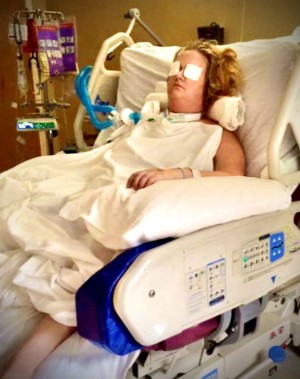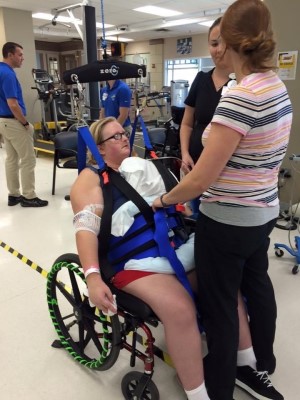Sara Vinson credits plasma for saving her life after Guillain-Barré syndrome diagnosis
In 2015, Sara Vinson caught a virus that quickly became pneumonia. After several rounds of antibiotics and steroids, Vinson, who was still sick, began experiencing full-body paralysis and was placed on a ventilator for two months. Vinson was diagnosed with Guillain-Barré syndrome (GBS). GBS is an inflammatory disorder of the nerves outside the brain and spinal cord and is characterized by the rapid onset of numbness, weakness, and often paralysis of the legs, arms, breathing muscles, and face.

Many diagnosed with GBS are hospitalized at the onset of their diagnosis to monitor breathing and other body functions until the disease is stabilized. High doses of immunoglobulin (Ig) replacement therapy are helpful in shortening the course of the acute phase of GBS, which can last anywhere from a few days to months. Most move to the rehabilitative phase within four weeks. However, Vinson was hospitalized for four months. Vinson credits plasma-derived intravenous immunoglobulin (IVIG) treatment for saving her life.
“I’m still alive today thanks to IVIG.”
At the time, Vinson had a one-year-old and said she felt like the next year, she was learning with him. She had to relearn how to walk, how to dress herself, and how to climb the stairs at the same time her son was learning these things for the first time. It took her about a year to be able to walk unassisted.

Vinson has also been diagnosed with postural tachycardia syndrome (POTS), Ehlers-Danls syndrome (EDS), and Sjögren’s syndrome.
POTS is a blood circulation disorder that causes a number of symptoms when someone transitions from lying down to standing up, such as a fast heart rate, dizziness, and fatigue. While there’s no cure, several treatments and lifestyle changes can help manage the symptoms of POTS. The cause of POTS is unknown, and anyone at any age can develop POTS. However, it mainly affects women between the ages of 15 to 50.
EDS is a group of 13 inherited disorders that affect connective tissues–like the skin, joints, and blood vessel walls. Individuals with EDS typically have overly flexible joints and stretchy, fragile skin. While there is no treatment, it is manageable with support from a number of different healthcare professionals, like physiotherapists, occupational therapists, and genetic counselors.
Sjögren’s syndrome is an autoimmune disorder that affects the entire body but is identified by the most common symptoms affecting the eyes and mouth with extensive dryness. Individuals with Sjögren’s also experience profound fatigue, chronic pain, and more. The treatment for Sjögren’s is personalized for each individual patient to best manage any symptoms they might have.
Vinson is an artist and designer who specializes in jewelry and crafting. She now shares not only her art and work on Instagram but also regular updates about her journey with her diagnoses, receiving IVIG, raising awareness for plasma donation, thanking donors, and connecting with others who also use plasma-derived therapies. She has even thanked plasma donors by sending them free vinyl stickers that she’s designed.
Inspired by Vinson’s story and want to donate plasma to help others like her? Become a plasma hero by donating at a location near you!

More Heroes

Find a donation center
Donate blood plasma. Be a hero. Locate a plasma donation center near you.

